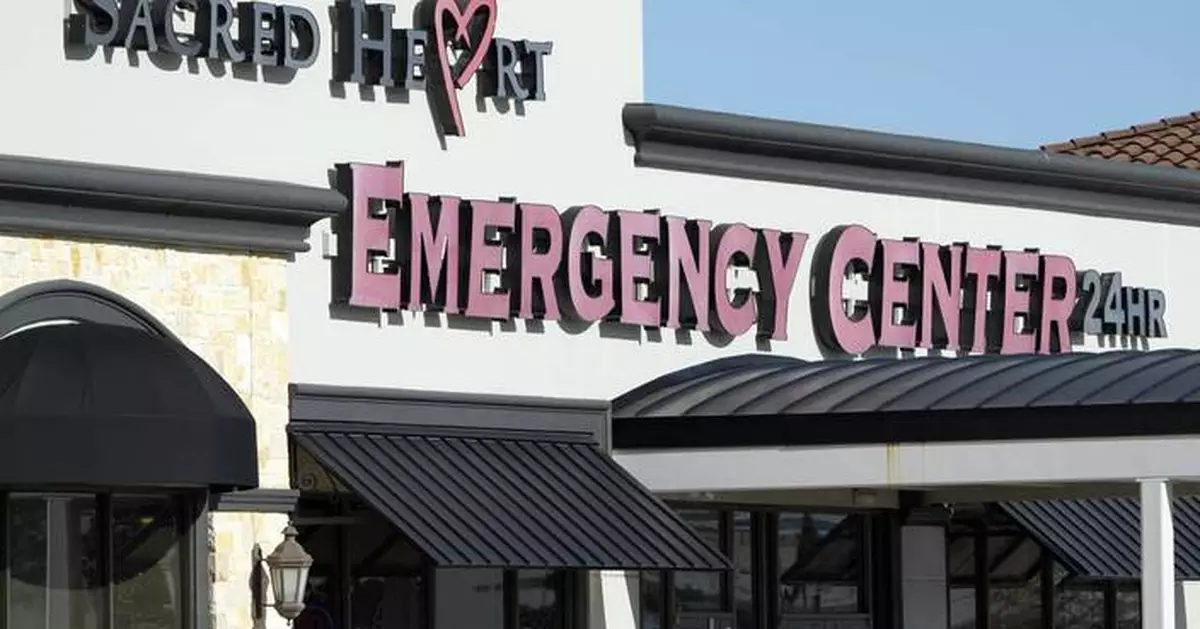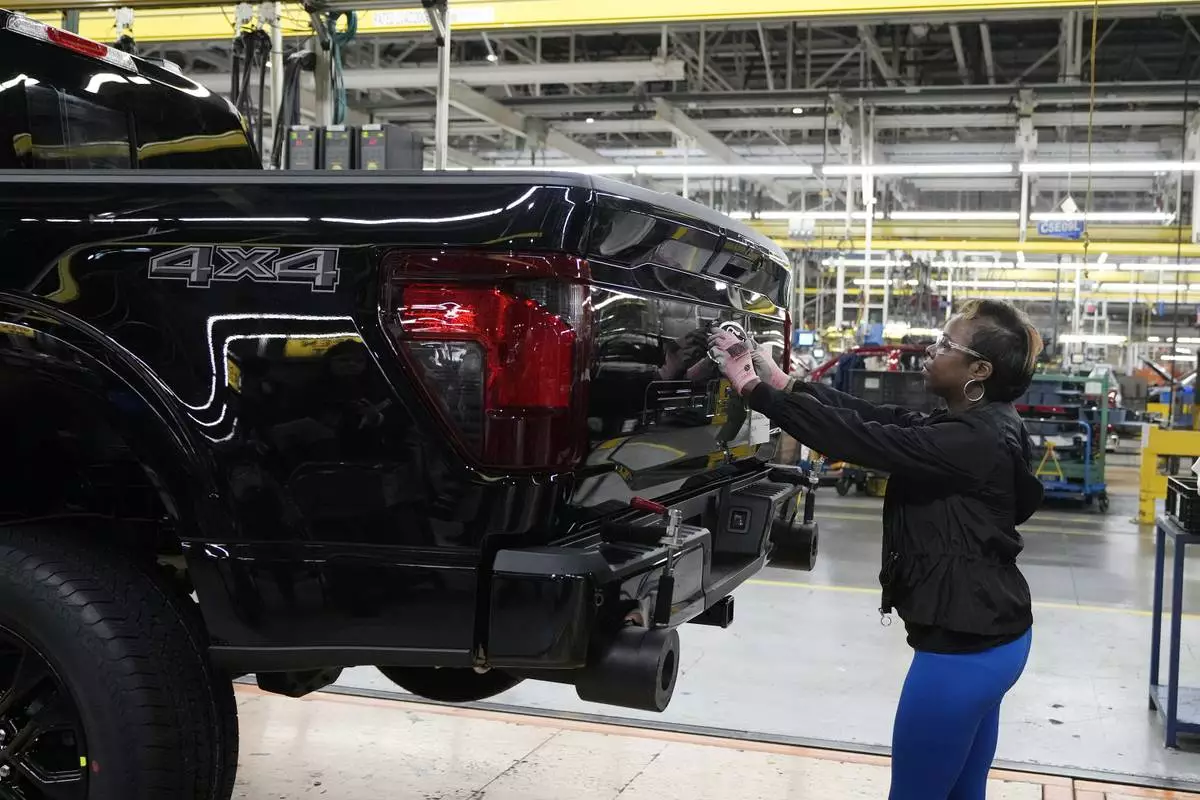WASHINGTON (AP) — The Biden administration told emergency room doctors they must perform emergency abortions when necessary to save a pregnant woman’s health, following last week's Supreme Court ruling that failed to settle a legal dispute over whether state abortion bans override a federal law requiring hospitals to provide stabilizing treatment.
In a letter being sent Tuesday to doctor and hospital associations, Health and Human Services Secretary Xavier Becerra and Centers for Medicare and Medicaid Services Director Chiquita Brooks-LaSure reminded hospitals of their legal duty to offer stabilizing treatment, which could include abortions. A copy of the letter was obtained by The Associated Press.
“No pregnant woman or her family should have to even begin to worry that she could be denied the treatment she needs to stabilize her emergency medical condition in the emergency room,” the letter said.
It continued, “And yet, we have heard story after story describing the experiences of pregnant women presenting to hospital emergency departments with emergency medical conditions and being turned away because medical providers were uncertain about what treatment they were permitted to provide.”
CMS will also resume investigations into complaints against emergency rooms in Idaho, after the Supreme Court ruled last week that hospitals there must be allowed to perform emergency abortions for now, despite the state's abortion ban.
But enforcement in Texas, the country's most populous state with a strict six-week abortion ban, will still be on hold because of a lower court ruling.
The letter is the Biden administration's latest attempt to raise awareness about a 40-year-old federal law that requires almost all emergency rooms — any that receive Medicare dollars — to provide stabilizing treatment for patients in a medical emergency. When hospitals turn away patients or refuse to provide that care, they are subject to federal investigations, hefty fines and loss of Medicare funding.
The Texas Alliance for Life responded to the letter by saying the Biden administration “falsely suggests that Idaho and other state pro-life laws fail to protect women facing life-threatening emergencies during pregnancy.”
“This is untrue,” the anti-abortion group said in a statement. “All state pro-life laws provide an abortion exception for those rare but tragic circumstances in which a pregnancy poses a threat to a mother’s life, including circumstances when death is not imminent. Those include Texas and Idaho.”
The emergency room is the last place that the Democratic White House has argued it can federally require rare emergency abortions to be performed, despite strict state abortion bans. After Roe v. Wade was overturned in 2022, and U.S. women lost the constitutional right to an abortion, HHS quickly sent letters to doctors, saying that they were required to provide abortions in emergency medical situations when they were needed to keep a woman medically stable.
An AP investigation found that complaints about pregnant women being turned away from emergency rooms spiked in 2022 after the U.S. Supreme Court overturned Roe, raising concerns about emergency pregnancy care in states that have enacted strict abortion laws.
In Idaho, enforcement of the federal law in emergency abortion cases had been on hold since January, when the state's strict abortion ban took effect. Idaho's state law threatens doctors with prison sentences if they perform an abortion, with an exception only if a pregnant woman's life, not her health, is at risk.
The Biden administration has argued that this conflicts with a federal law called the Emergency Medical Treatment and Active Labor Act, or EMTALA. Roughly 50,000 women every year develop serious pregnancy complications, like blood loss, sepsis or organ loss. Some of those women may show up in emergency rooms and in the most serious cases where a fetus is unlikely to be viable, doctors may recommend a termination of the pregnancy.
For example, if a woman’s water breaks during the second trimester, a condition known as a preterm premature rupture of membranes, the fetus may not be viable, and continuing the pregnancy means that the patient may risk developing sepsis, an infection that can be deadly.
Texas is also suing the Biden administration over its guidance around the law. The Department of Justice has appealed a lower court ruling that said the law could be enforced to the Supreme Court, which could decide on taking up the case later this year.
HHS has also sought in recent months to make it easier for any patient who is turned away or not appropriately transferred to file complaints against hospitals. Earlier this year, CMS unveiled a new web page that allows anyone to submit a complaint in a straightforward, three-step process.
“We will continue to build on our recent actions to educate the public about their rights to emergency medical care and to help support efforts of hospitals and health care professionals to meet their obligations under EMTALA,” the letter said.
The department said the complaint webpage will also be available in Spanish, starting today.
Lupe Rodriguez, executive director of the National Latina Institute for Reproductive Justice, said her team has had conversations for a few months with the HHS secretary to encourage the office to make tools available in Spanish.
Latinas are more likely to be uninsured, lack access to prenatal care and live in states with abortion bans, she said. This is even more of a concern for Latinas with limited English language skills or who are in mixed immigration status families, she said.
“It’s incredibly important to be centering Latinas and people of color because we’re the most impacted by these abortion bans and attempts to restrict emergency care,” she said.
—
Fernando reported from Chicago.

FILE - Sacred Heart Emergency Center is pictured March 29, 2024, in Houston. The Biden administration is telling emergency room doctors they must perform emergency abortions when necessary to save a pregnant woman's health. That's following last week's 6-3 Supreme Court ruling that failed to settle a legal dispute over whether state abortion bans override the federal law that requires hospitals to stabilize patients. (AP Photo/David J. Phillip, File)











